8 Carnivorous Houseplants That Bring the Wild Indoors
Imagine having plants in your home that actually hunt for food. Carnivorous houseplants may sound like something from a science fiction story, but they are very real and quite fascinating. These plants have evolved to trap insects and other small prey, making them both intriguing and beautiful. If you are looking to add something unique to your indoor garden, these plants might be just what you need.
This post may contain affiliate links, which helps keep this content free. Please read our disclosure for more info.
Venus Flytrap (Dionaea muscipula)
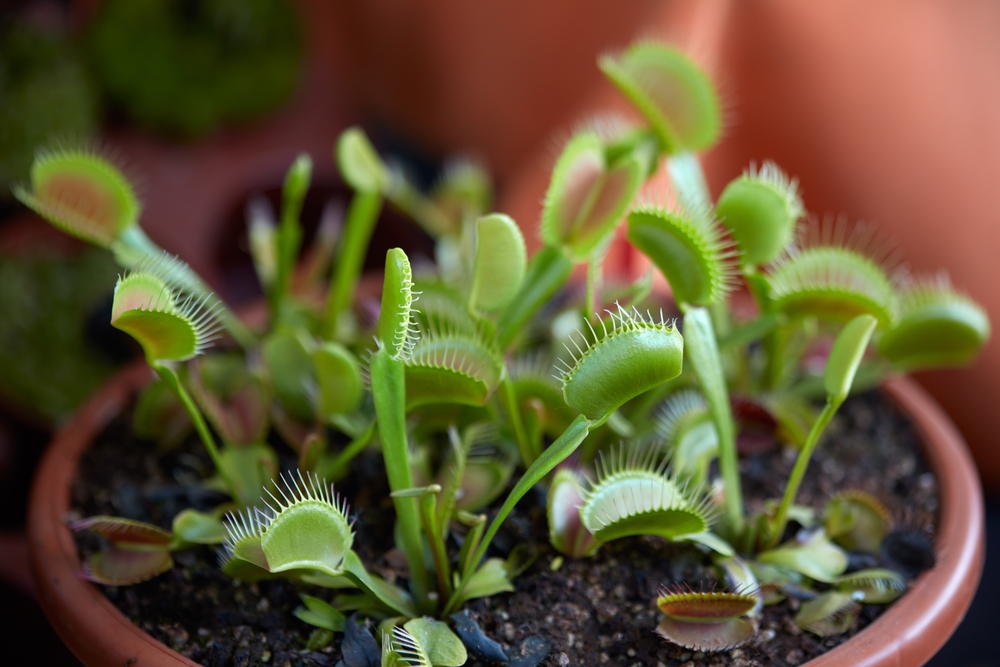
The Venus Flytrap is one of the most famous carnivorous plants. It has unique “trap” leaves that snap shut when prey touches its tiny trigger hairs. Insects such as flies and ants are quickly captured, where they are digested over several days. While it may seem aggressive, this plant is actually quite easy to care for if given the right conditions.
To grow a Venus Flytrap successfully, it requires a sunny location and high humidity. It thrives in nutrient-poor soil, so make sure to use a mix of sphagnum moss and perlite. The plant’s striking appearance, with its red-tipped traps, adds a bold element to any indoor garden.
Pitcher Plant (Sarracenia)
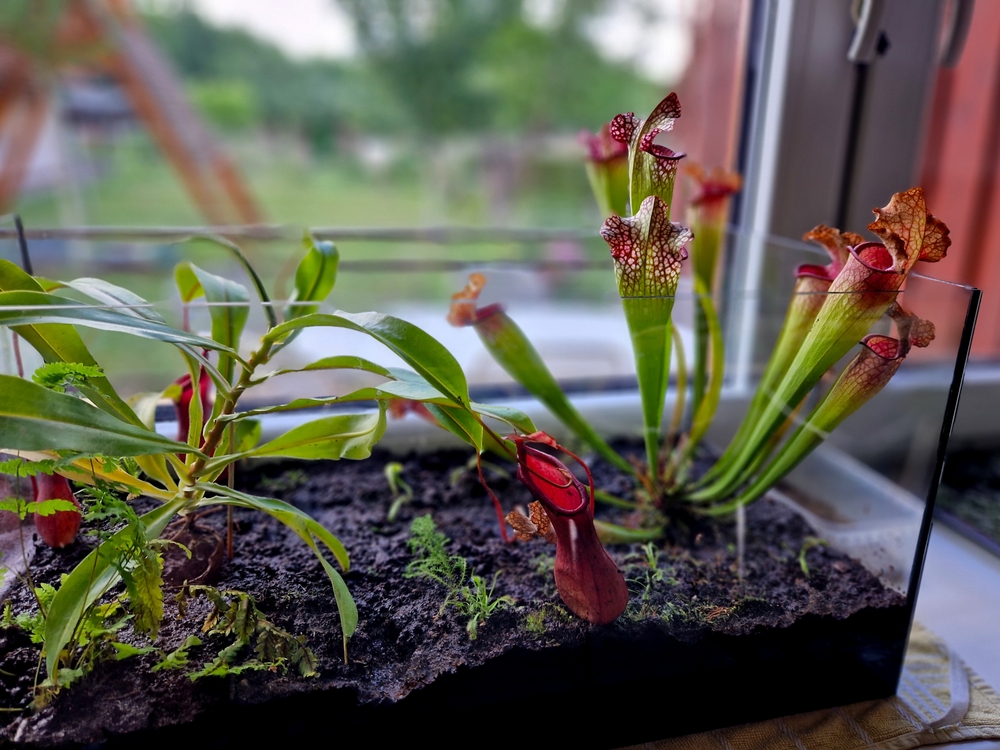
Pitcher plants are another captivating addition to your indoor jungle. These plants have tall, tubular leaves that trap insects in their slippery surfaces, often drowning their prey in a pool of digestive enzymes. The structure of the pitcher plant varies, but all of them use nectar to attract insects into their deadly traps. Its unique look, often compared to a chalice or goblet, makes it a favorite among carnivorous plant enthusiasts.
Pitcher plants require bright, indirect sunlight and prefer a humid environment. They thrive in acidic, well-draining soil such as sphagnum moss or a peat-based mix. These plants are perfect for a windowsill, as long as they are kept out of direct heat. Over time, they can grow quite large, making them an impressive feature in any room.
Sundew (Drosera)
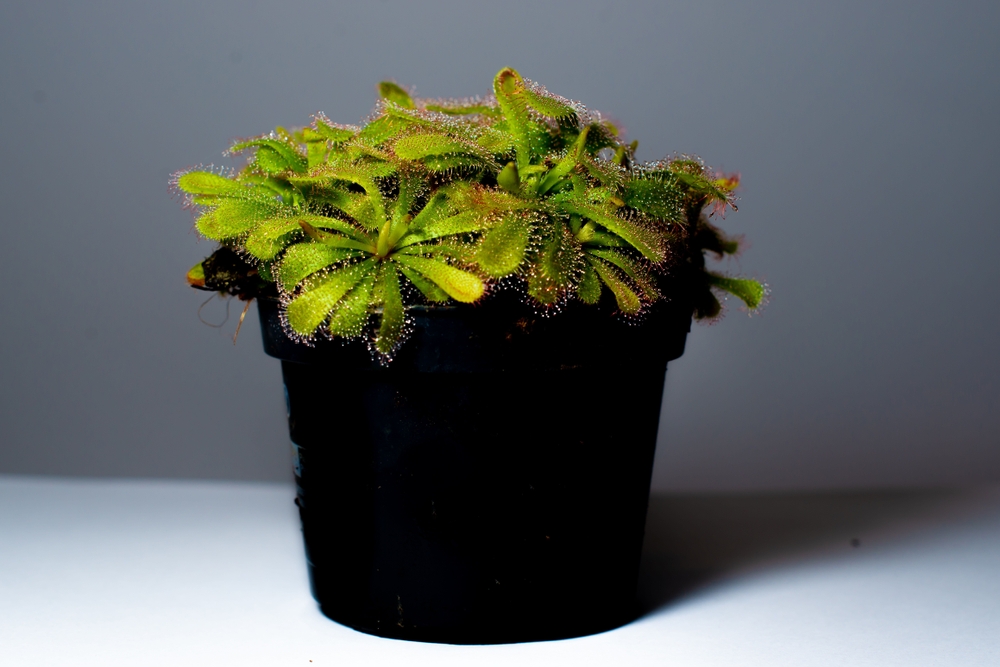
Sundews are small, delicate plants with tiny, sticky hairs on their leaves that resemble dew drops. These hairs secrete a glue-like substance that traps small insects. Once the prey is stuck, the sundew leaf curls around it, ensuring the insect cannot escape. This fascinating method of capturing food makes the sundew a must-have for any plant lover.
These plants prefer a humid, bright environment and require plenty of water. Like other carnivorous plants, they thrive in nutrient-poor soil, making a mix of sphagnum moss ideal. They can be grown in containers or hanging baskets to create a more dynamic, jungle-like atmosphere. While sundews are small, they are highly effective at keeping flies and mosquitoes at bay.
Butterwort (Pinguicula)
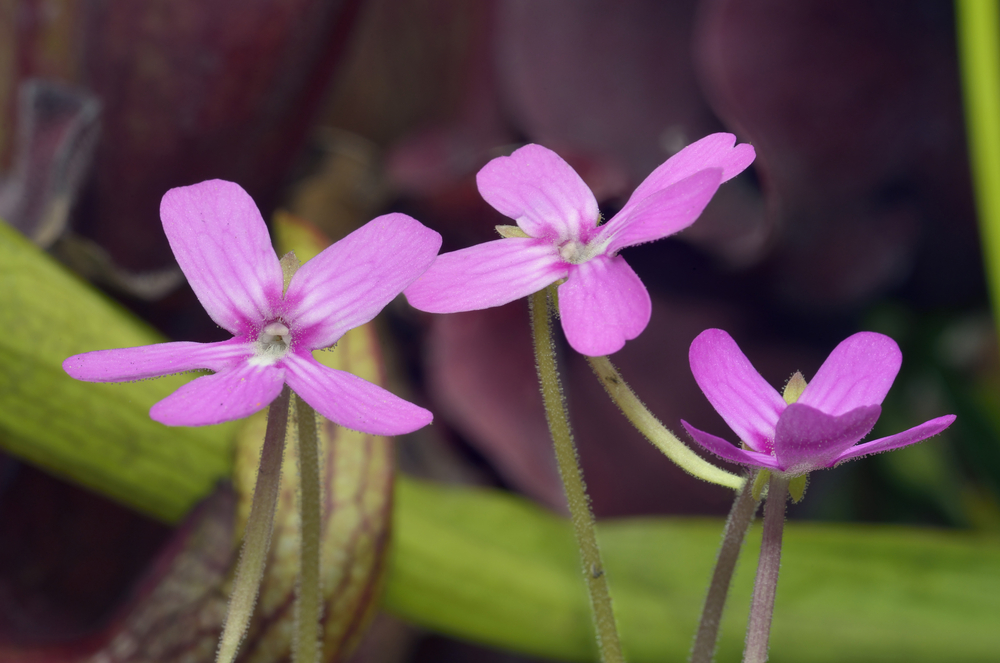
Butterworts are charming carnivorous plants that feature soft, glossy leaves coated with sticky substances. These plants use their gooey leaves to attract and trap insects, which are then digested over time. Butterworts are particularly known for their beautiful, purple or white flowers that bloom in the warmer months. They are a great choice for those looking for a plant that is both beautiful and functional.
When growing butterworts, it is important to provide them with bright, indirect sunlight and consistent moisture. They thrive in humid conditions and do well in terrariums or closed containers. Make sure to use soil that is low in nutrients to mimic their natural environment. With minimal care, butterworts will add both color and interest to your indoor garden.
Bladderwort (Utricularia)
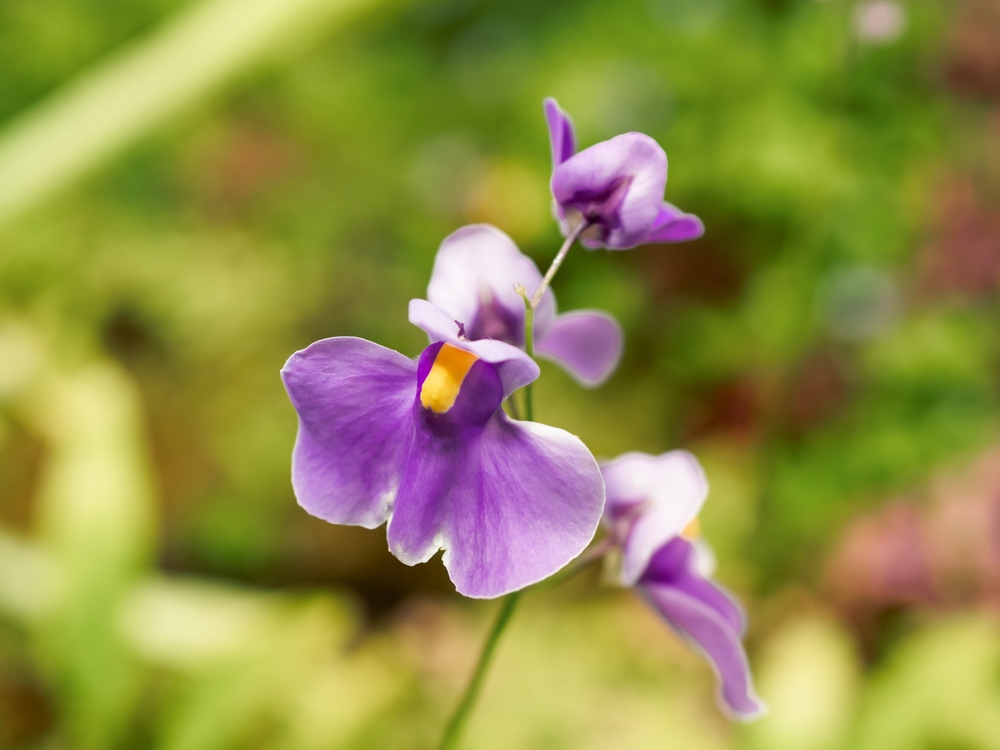
Bladderworts are aquatic carnivorous plants that have specialized traps known as bladders. These bladders are capable of sucking in small prey, like water fleas or tadpoles, when they trigger tiny hairs on the plant’s surface. Bladderworts are truly fascinating, as they are the fastest-acting carnivorous plants.
These plants can be grown in aquariums or moist terrariums with plenty of water. Bladderworts require a very specific growing environment, including high humidity and low-nutrient soil. They enjoy full sunlight and should be kept in areas that receive direct light for several hours each day. Their incredible hunting ability and unique growth habit make them a conversation starter in any home.
Nepenthes (Tropical Pitcher Plant)
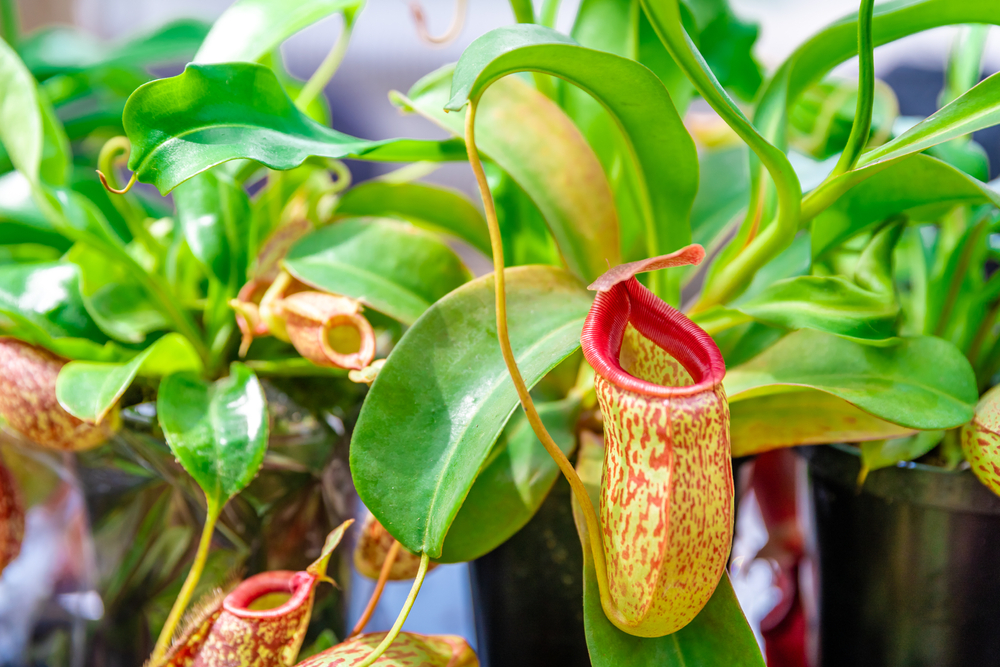
Nepenthes, also known as tropical pitcher plants, are native to Southeast Asia and have evolved remarkable adaptations to capture insects. These plants feature large, bulbous pitchers that trap prey and store digestive fluids. The liquid inside the pitcher acts like a trap, luring insects to their doom. With over 100 species, Nepenthes vary greatly in size and color, making them a versatile choice for any plant collection.
These plants require a warm, humid environment with plenty of indirect sunlight. They thrive in high humidity and benefit from being placed in terrariums or humidifiers. Nepenthes also enjoy nutrient-poor soil, making them ideal for a mix of sphagnum moss and sand. Their striking pitchers and ability to capture prey make them a true centerpiece in any home garden.
Cephalotus (Australian Pitcher Plant)
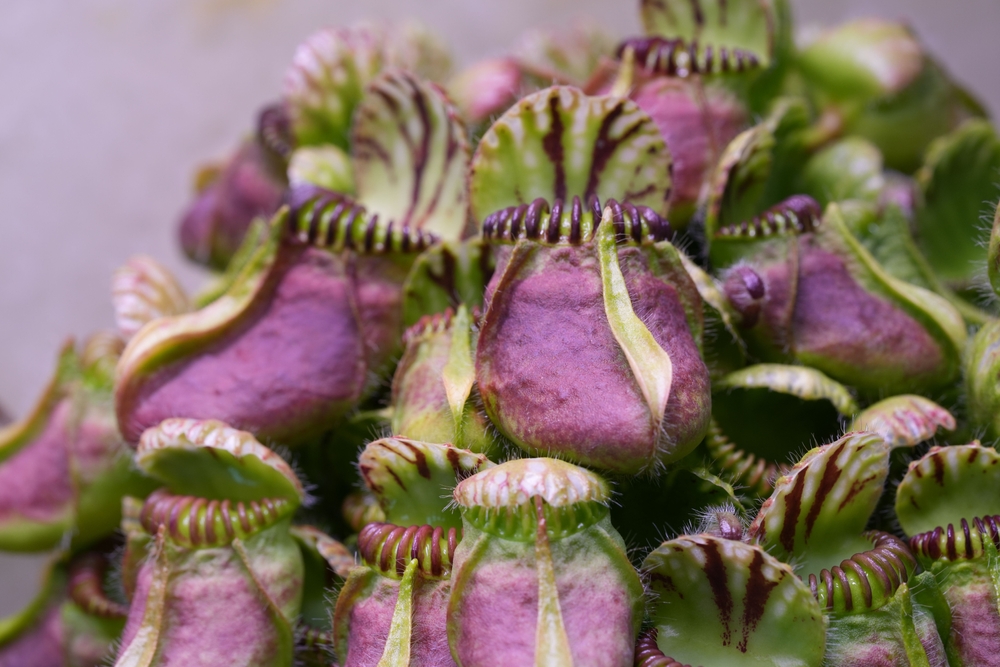
Cephalotus, or the Australian Pitcher Plant, is a small yet powerful carnivorous plant. Its unique pitchers trap insects, which then fall into the plant’s digestive fluid. This plant is particularly known for its striking, small size and its ability to thrive in both sun and shade. Its delicate beauty and efficient predation make it a favorite among collectors.
Cephalotus enjoys a humid environment with temperatures between 70 and 80°F. It thrives in well-draining, acidic soil and should be watered regularly. For best results, place it in a location with bright, indirect light. This plant’s manageable size and efficient insect-catching ability make it a perfect addition to any indoor garden.
Drosophyllum (Dew-Thread)
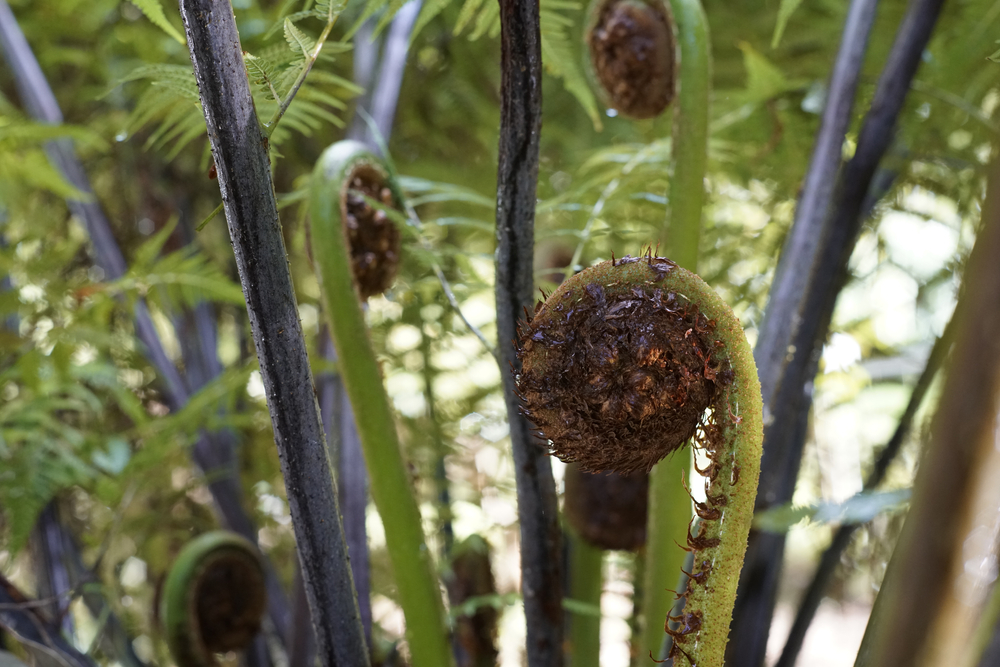
Drosophyllum, also known as Dew-Thread, is a unique carnivorous plant that catches prey with its long, thread-like leaves covered in sticky droplets. These plants are native to dry, arid environments, which makes them stand out in the world of carnivorous plants. The dew drops attract insects, which become stuck to the plant. Unlike many carnivorous plants, Dew-Thread thrives in dry, sandy soil.
This plant requires a lot of sunlight and needs to be watered carefully. It should be placed in a location with good air circulation and minimal humidity. Drosophyllum’s unusual method of capturing prey and its unique environment needs make it an interesting challenge for plant enthusiasts. Its elegant, thread-like leaves add a touch of exotic beauty to any space.
This article originally appeared on Avocadu.
